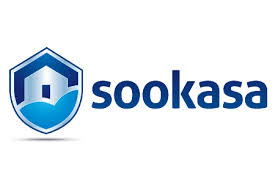 Creating a hardware device is hard; making it in large quantities is exponentially harder. A reminder of this hard truth appeared on Friday on the Indiegogo page of Scanadu, a medical device startup that began shipping its long-awaited Scout product to its backers last week, then stopped, saying the device isn’t working as expected.
Creating a hardware device is hard; making it in large quantities is exponentially harder. A reminder of this hard truth appeared on Friday on the Indiegogo page of Scanadu, a medical device startup that began shipping its long-awaited Scout product to its backers last week, then stopped, saying the device isn’t working as expected.
It’s exactly the problem that Highway1, a nearly year-old incubator program in San Francisco, promises to solve. Here’s how it works: Twice a year, Highway1 invites 10 or so teams to work at its offices for four months. In exchange for 3 to 6 percent of their companies, it provides them with $20,000, access to $3 million in prototyping tools, and an education – including in Shenzhen, China — about how consumer electronics are made. Highway1 should know; it’s backed by PCH International, a 5,000-person, China-based company that handles manufacturing contracts, packaging, and shipping for major electronic brands, and which has strong relationships with Asian manufacturers as a result.
Highway1’s program isn’t for everyone. To gain entry, a team has to have at least one working prototype (however crude), and it has to have enough financial muscle to pay for its production run. (The $20,000 it receives from Highway1 won’t cut it.) Late last week, I talked with the head of the program, Brady Forrest — who is an engineer, operator, and former VC — to learn more about his requirements and when Highway1 is accepting its next batch of companies. Our chat has been edited for length.
You liken Highway1 to Amazon Web Services, which helps software companies scale.
There’s a concept called the Smiling Curve [whose points are marked by “create,” then “make,” then “sell”]. And VCs don’t want to invest in the “make” part. They don’t want to spend a lot of money on you building out a line. So our thesis is: let PCH be that AWS with hardware. We’re a supply chain company; we have 500 engineers in Shenzhen who manage factories for companies of all size. We [can] design the line and build that NRE (for non-recurring engineering, which refers to the one-time cost to research, develop, design and test a new product). We can handle credit terms and take payment…
You also help these teams pitch to investors at a demo day.
Yes, 200 attendees came to our most recent demo day and seven of 11 companies presented: three that are public and four that are in stealth. Two others opted out and two didn’t get far enough along; maybe they’ll demo one day; I’m not sure.
What types of companies are you most keen on helping? Are wearables overdone? Reportedly, people don’t wear their wearables for very long — at least, not their Galaxy smartwatches.
Wearables are totally of interest. That piece, reporting on the Galaxy, was like picking on the weak kid in the litter. If you bought a Galaxy Note [smart phone], it came free with purchase. In other words, people have been trying to sell something they received for free on eBay, so that’s not quite fair [to hold up as evidence that wearables are troubled]. Either way, if people aren’t happy with their wearables, it means there’s an opportunity to do it right.
I’m also bullish on the connected kitchen, and we’re always looking for more enterprise-type companies. I’m not afraid of teams that say, “We’re not a hardware company.” That means they’re looking beyond just hardware to the services and data set behind the hardware, and that’s really how you make hardware more useful and something that people need and love.
When do people need to apply for your next class?
We start accepting applications on April 17 and the program will start anew in September, though some companies are already coming in to talk with us. One team that has $800,000 in funding was just here and [the founder] and I were chatting and he told me they were going to go to tooling in two months. I had to run into another meeting but I had one of our engineers chat with him. [The engineer] told him, “You’re doing this out of order. If you go to tooling, you’re going to waste $50,000. You first need to do a prototype that takes these two factors into account, then do a 3D printing of this initial run.” And so on. And you could kind of see them saying, “Oh, sh_t. We just got schooled.”
Photo of Brady Forrest courtesy of Geekwire.
Sign up for our morning missive, StrictlyVC, featuring all the venture-related news you need to start you day.









